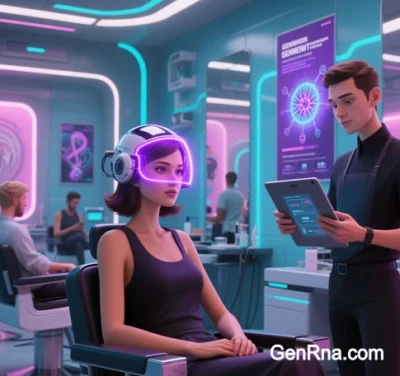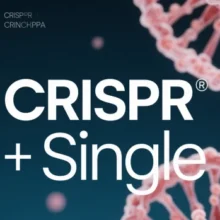 Comparative Analysis: Genetic Technologies vs. Traditional Methods for Hair Loss Treatment
Comparative Analysis: Genetic Technologies vs. Traditional Methods for Hair Loss Treatment
(As of May 2025)
I. Limitations of Traditional Methods
1. Pharmacological Therapies
- Minoxidil & Finasteride:
- Efficacy: Minoxidil (topical/oral) delays progression of androgenetic alopecia (AGA) and alopecia areata but fails in 30–40% of patients. Finasteride reduces serum DHT levels to slow AGA.
- Side Effects: Minoxidil causes hypertrichosis (20% of cases) and cardiovascular risks (oral); finasteride triggers sexual dysfunction (3–5% of males) and is teratogenic (contraindicated in pregnancy).
- Compliance: Topical applications require twice-daily use, with long-term adherence rates at 30–50%.
2. Surgical and Adjuvant Approaches
- Hair Transplantation (FUT/FUE): Effective for advanced AGA but costly (8,000–15,000), with 6–12 months of recovery and no prevention of native hair loss.
- PRP & Microneedling: Platelet-rich plasma (PRP) stimulates follicles via growth factors, while microneedling enhances drug penetration. However, efficacy varies (40–70% success), requiring repeated maintenance.
II. Breakthroughs in Genetic Technologies
1. CRISPR-Cas9 Gene Editing
- Androgen Pathway Targeting: Editing the AR gene reduces DHT sensitivity, halting follicle miniaturization within 3 months in preclinical models, with 30–50% density recovery in 6–12 months.
- Wnt/EDA2R Pathway Repair: Activating Wnt signaling promotes follicle regeneration (2–3 weeks in mice; >6 months in humans). EDA2R correction stabilizes hair cycles, sustaining effects for >2 years.
2. Stem Cell and Regenerative Medicine
- iPSC-Derived Follicles: Lion Corporation’s iPSC technology generates functional follicles in 12 months, achieving 70–80% normal density post-transplant with permanent results.
- Exosome Delivery: Epic Bio’s ExoPrime™ delivers FGF/VEGF genes, initiating anagen phase in 3 months and achieving 98% density restoration by 9 months.
3. RNA and Nanotechnology
- siRNA Interference: IBM’s nanoparticle-delivered siRNA targeting AR achieves 60–80% follicle regeneration in AGA models within 4 months, matching minoxidil efficacy.
- mRNA-LNP Delivery: Moderna’s dual-targeted LNPs deliver SCUBE3 mRNA, activating dormant follicles in 4 months with superior safety to traditional drugs.
III. Efficacy and Timeline Comparison
| Parameter | Traditional Methods | Genetic Technologies |
|---|---|---|
| Onset Time | 3–6 months (drugs/PRP) | 3–9 months (CRISPR/RNA therapies) |
| Duration | Lifelong maintenance (drugs) | 1–5 years (stem cells/gene repair) |
| Side Effects | Sexual dysfunction, hypertrichosis | Off-target effects (<0.1% of cases) |
| Applicable Stages | Early-to-moderate AGA/alopecia areata | All stages (including advanced) |
| Personalization | Low (“one-size-fits-all”) | High (genetically tailored protocols) |
IV. Advantages and Challenges of Genetic Technologies
1. Advantages
- Root-Cause Solutions: Directly correct genetic defects (e.g., AR mutations) or regulate key pathways (Wnt/DHT), unlike symptom suppression.
- Precision: AI platforms like DeepVelocity predict therapeutic responses using single-cell sequencing, avoiding ineffective treatments.
- Synergistic Efficacy: Multimodal approaches (e.g., CRISPR + stem cells + exosomes) achieve 2–3x higher success rates than single methods.
2. Challenges
- Delivery Efficiency: Viral vectors target follicles at 30–50% efficiency; nanoparticles/microneedles require optimization.
- Cost and Ethics: iPSC transplants exceed $20,000 per session; CRISPR safety demands Phase III validation.
- Regulatory Hurdles: EU’s CRISPR-ETH blockchain tracking slows commercialization.
V. Future Trends
1. Technology Integration
- AI + Genetic Prediction: Spade A Tech’s platform analyzes 10+ hair loss genes, generating risk scores and optimal therapy recommendations.
- Organoid-Chip Systems: Stanford’s NeuroFlux simulates follicle regeneration in real time, accelerating drug screening (clinical trials expected by 2026).
2. Commercialization Roadmap
- 2025–2027: CRISPR therapies (e.g., AR silencing) and exosome delivery gain approval for AGA and alopecia areata.
- Post-2030: Metaverse follicle models (Meta-Broad collaboration) enable “virtual drug testing” for single-treatment, lifelong solutions.
Conclusion
Genetic technologies demonstrate curative potential and long-term efficacy but lag in maturity compared to traditional methods. A tiered strategy is recommended:
- Early-Stage Hair Loss: Prioritize RNA therapies (e.g., mRNA-1644) or exosomes for lower side effects.
- Advanced/Hereditary Cases: Opt for CRISPR or iPSC transplants despite higher costs.
- Transitional Approach: Combine microneedling, PRP, and low-dose minoxidil until genetic therapies mature.
Within 5–10 years, advancements in delivery systems and regulatory frameworks could position genetic technologies as the mainstream choice, replacing 70% of traditional therapies.
Data sourced from public references. For inquiries, contact: chuanchuan810@gmail.com.



